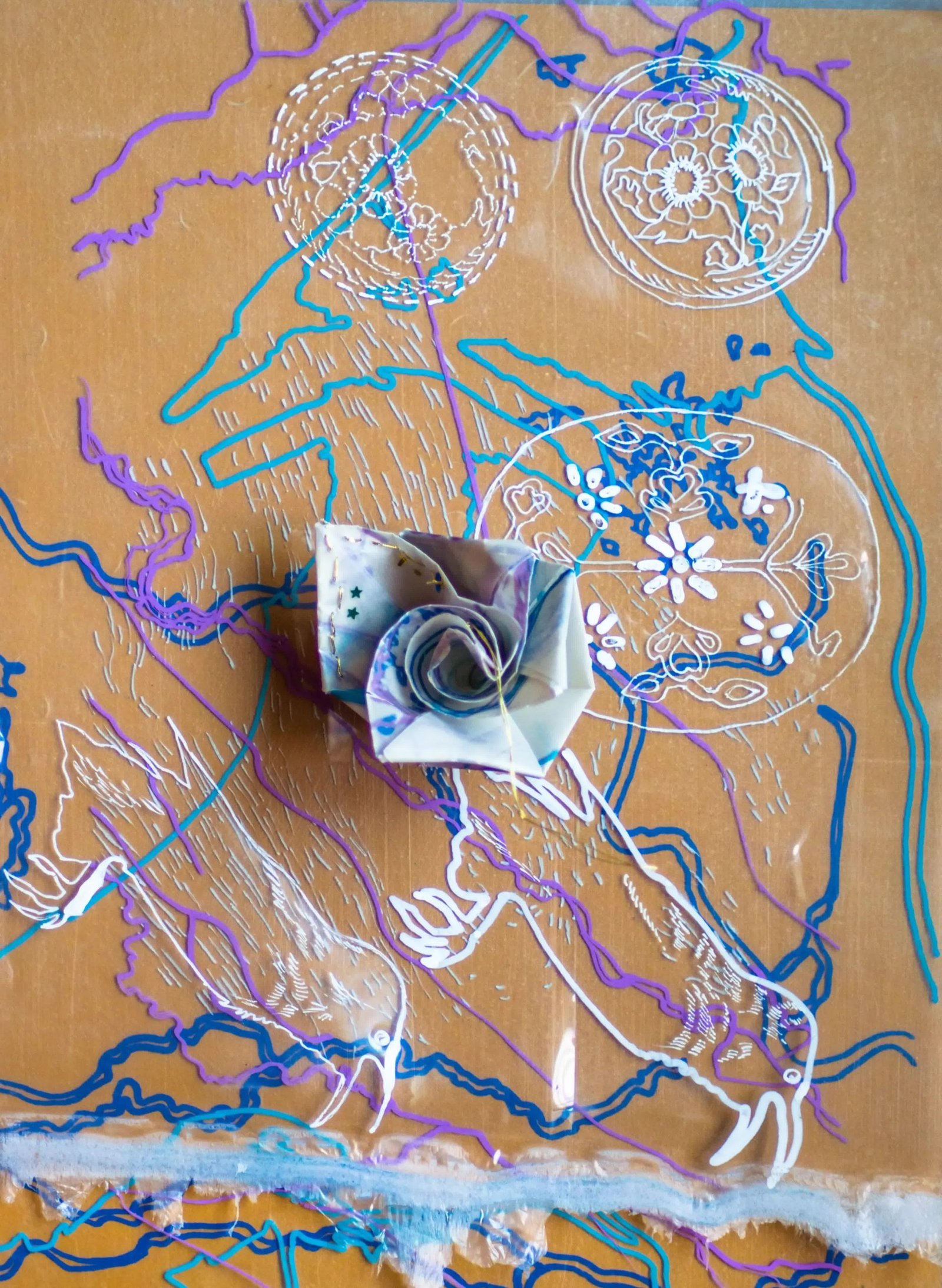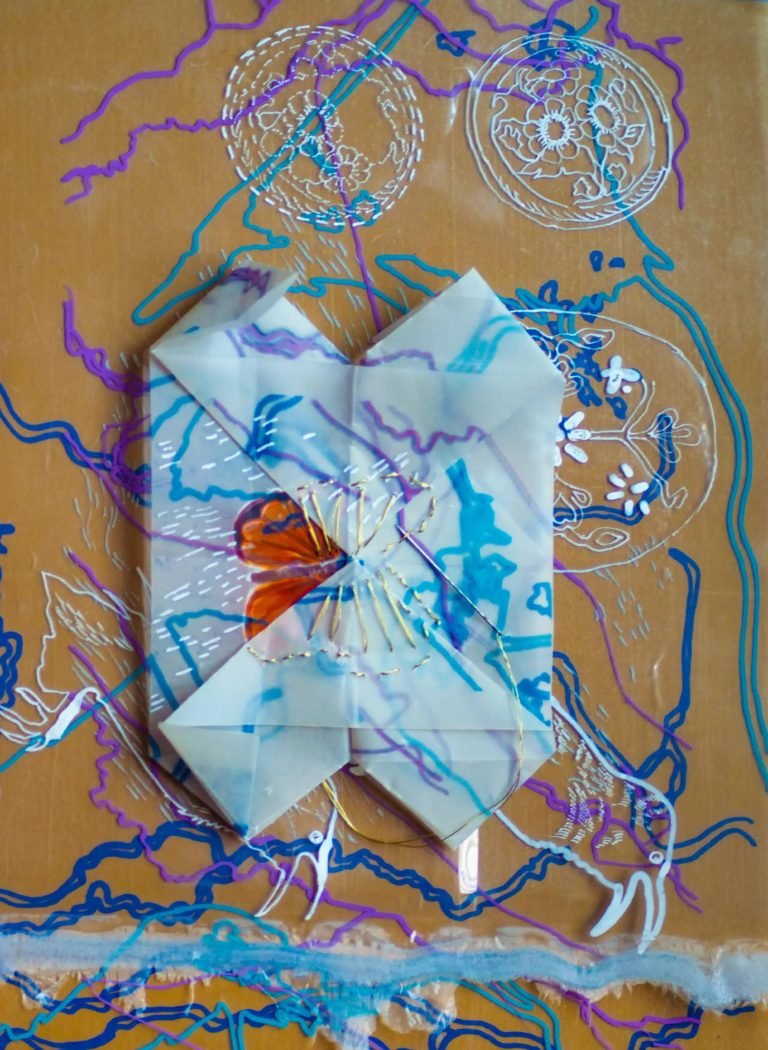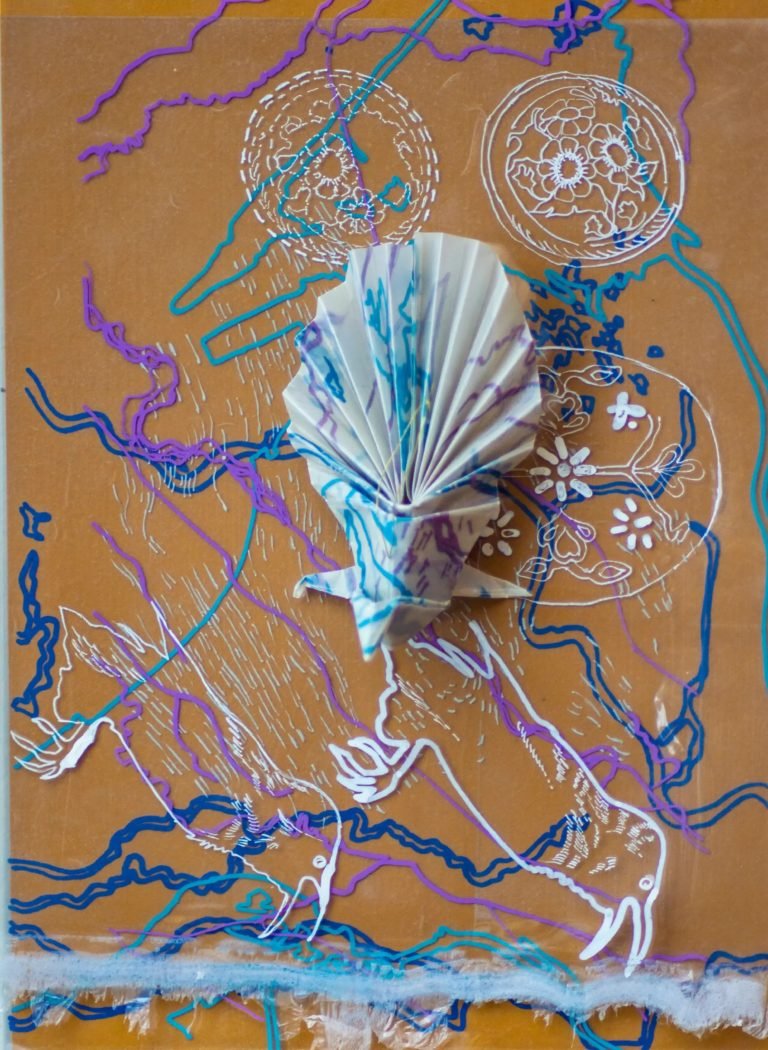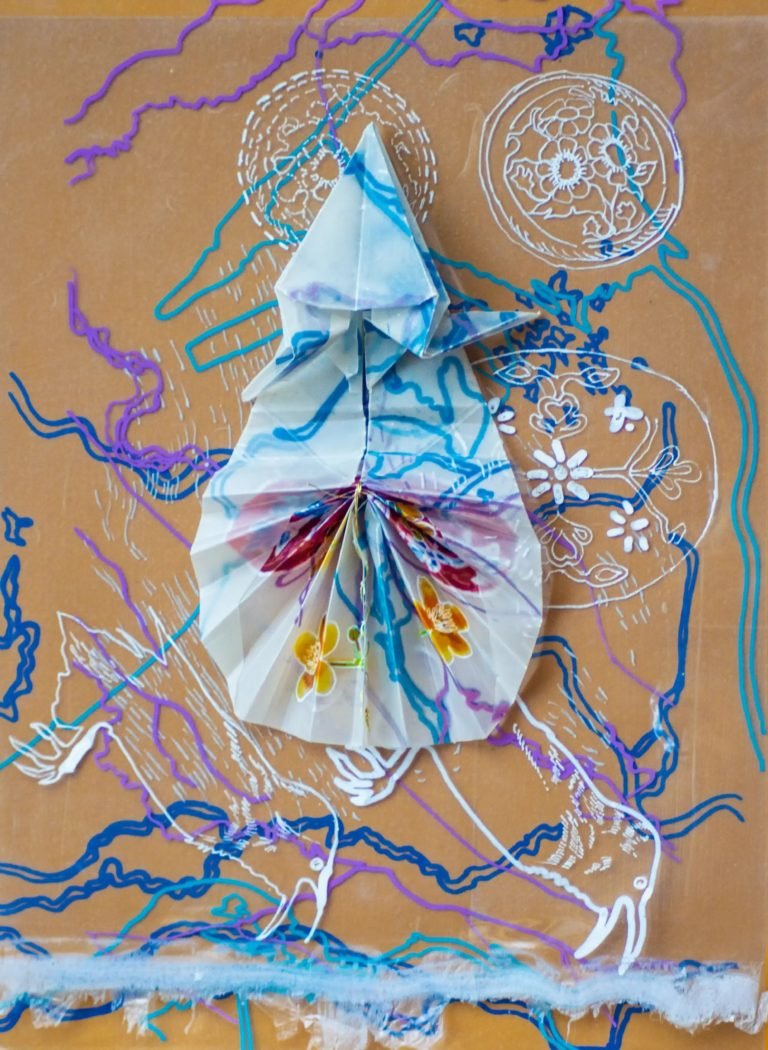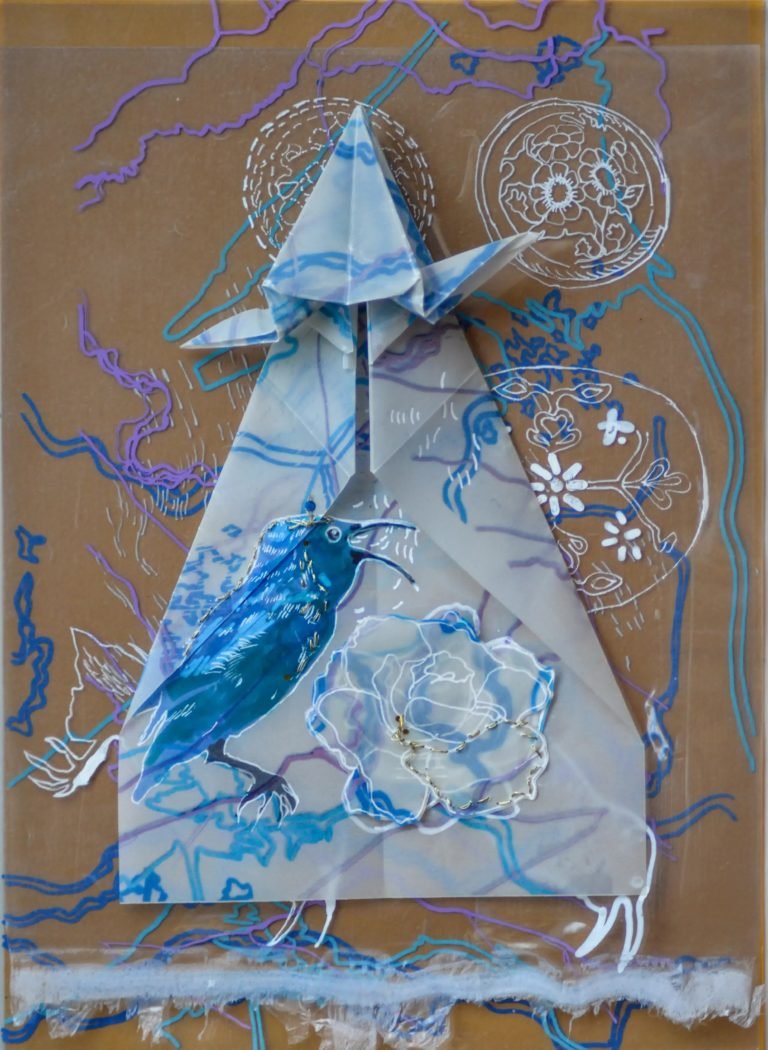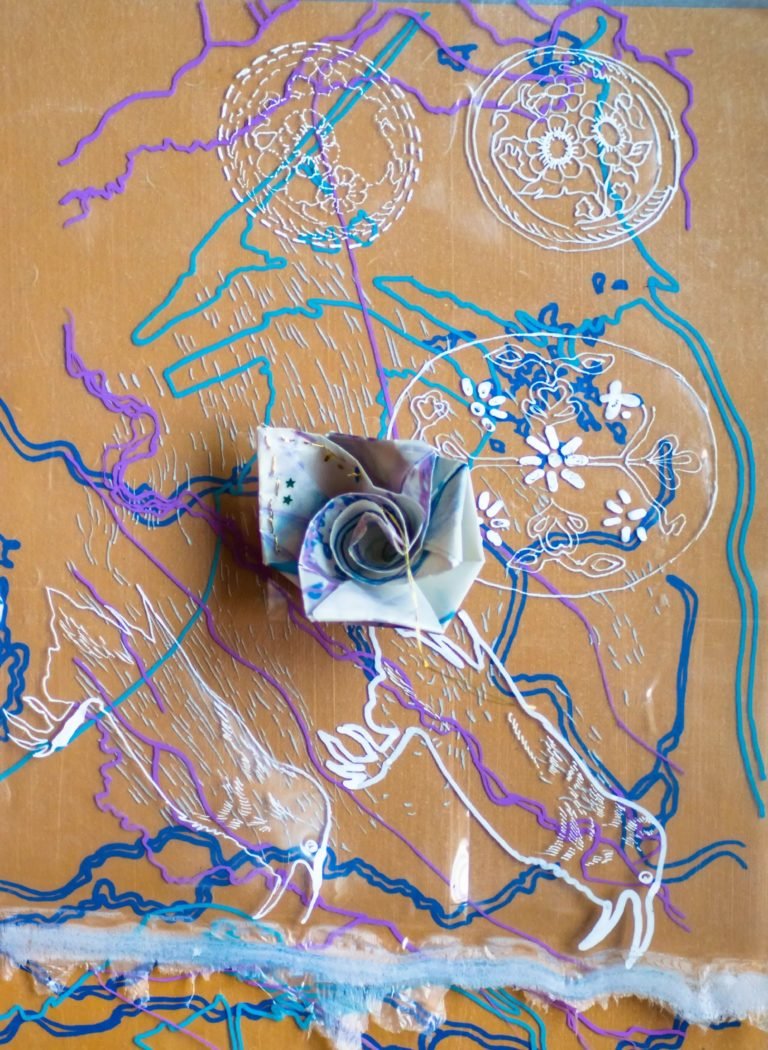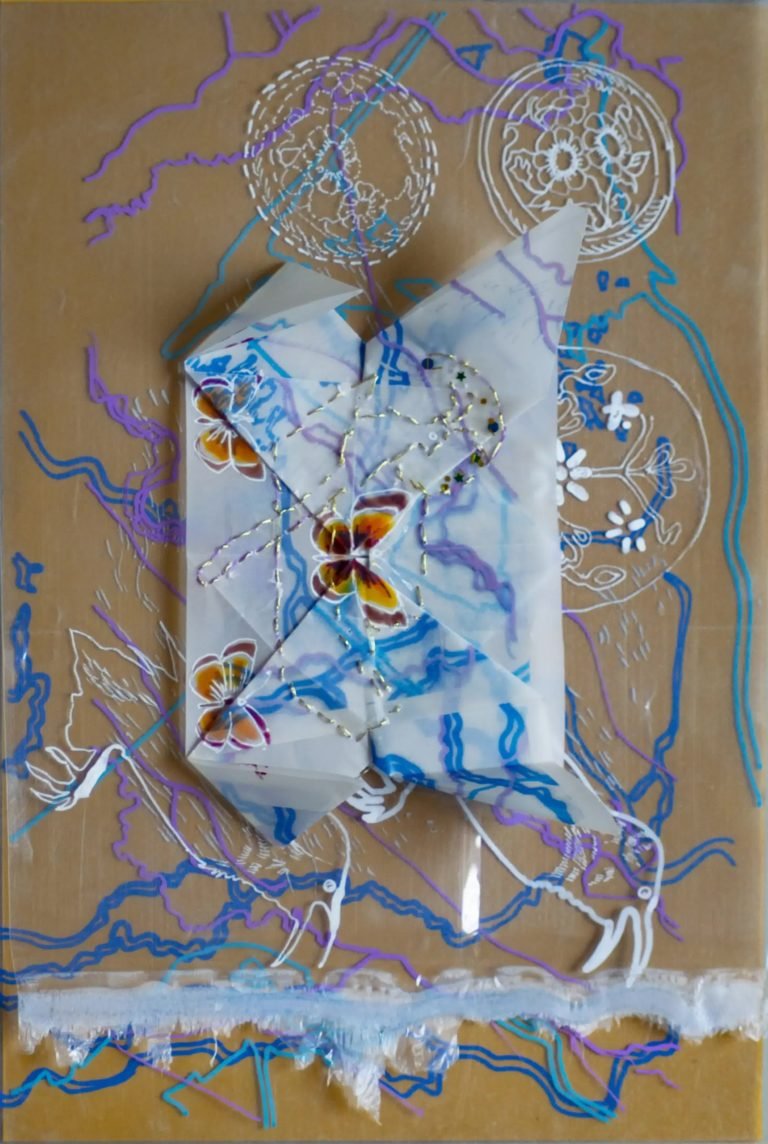This map (anti-map?) goes beyond pathfinding. It actually doesn't at all tell you which way to go.
Multiple paths overlaid on one another barely assist navigation. All we see is paths converge and come together, become points of contact. The map shows multiple narratives coalescing, seeking plurality, finding refuge in intersections.
Perhaps the simurgh is not an otherworldly saviour? Coming together as individuals, putting together the different places and "selves" we bring, we all become the simurgh.
My grandmother--Nano--drew flowers, motifs, and patterns in my notebook, the ones she used to paint on Saris. The process would begin with tracing her drawings, as if footsteps to remember. Following a trail of conversation fragments that Nano and I shared when I was younger, my earliest drawing lesson was tracing drawings of roses that she would make.
I live in Karachi city by the sea. What does it mean to have roots and family near Calcutta, a river but finding home in Lahore near another river. Does water have memory?
I asked Nano to draw home, and she drew a boat with a peacock in it.
I took pictures of the sunbird, who made a woven nest much like the weaver bird from Nano's stories (called the Baya).
I thought that maybe home was where the boat was from. But, now I am realizing that maybe it meant that she took it home with her, for her home was always the voyage.
A ship with a bird, constant movement and constant migration.
I wanted to find common ground, any ground.
I wanted her to find her home in me as well when I found it in her.
The map transforms from a multilayered plane into folds lifting up to occupy space, to make tangible the shifting understandings of things that remind me of home.
